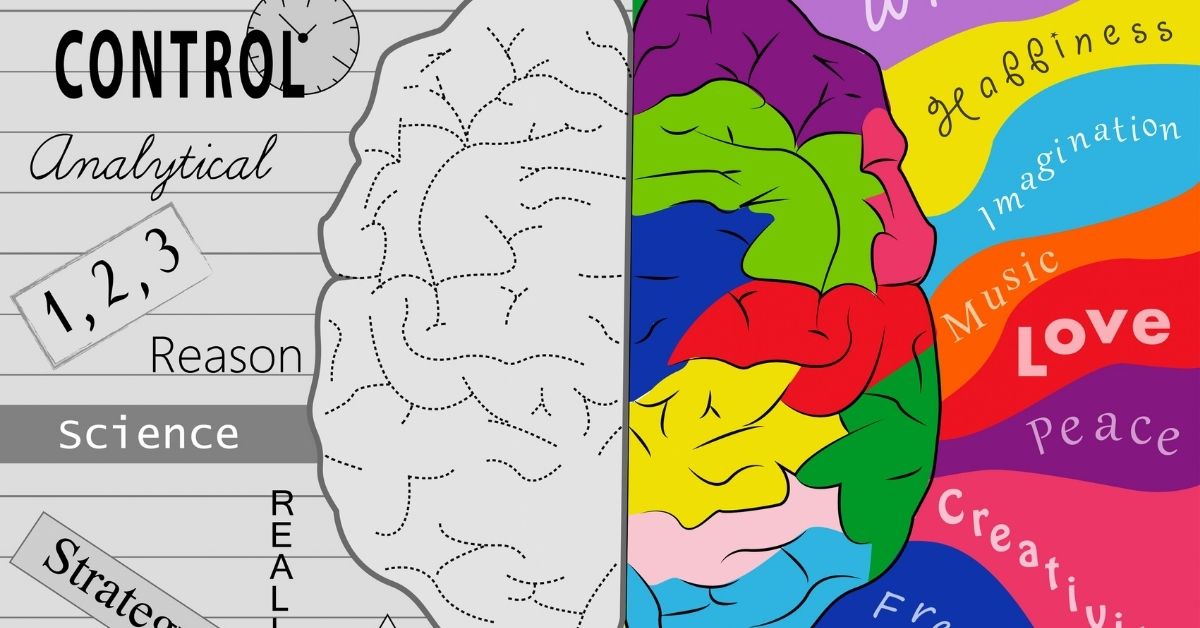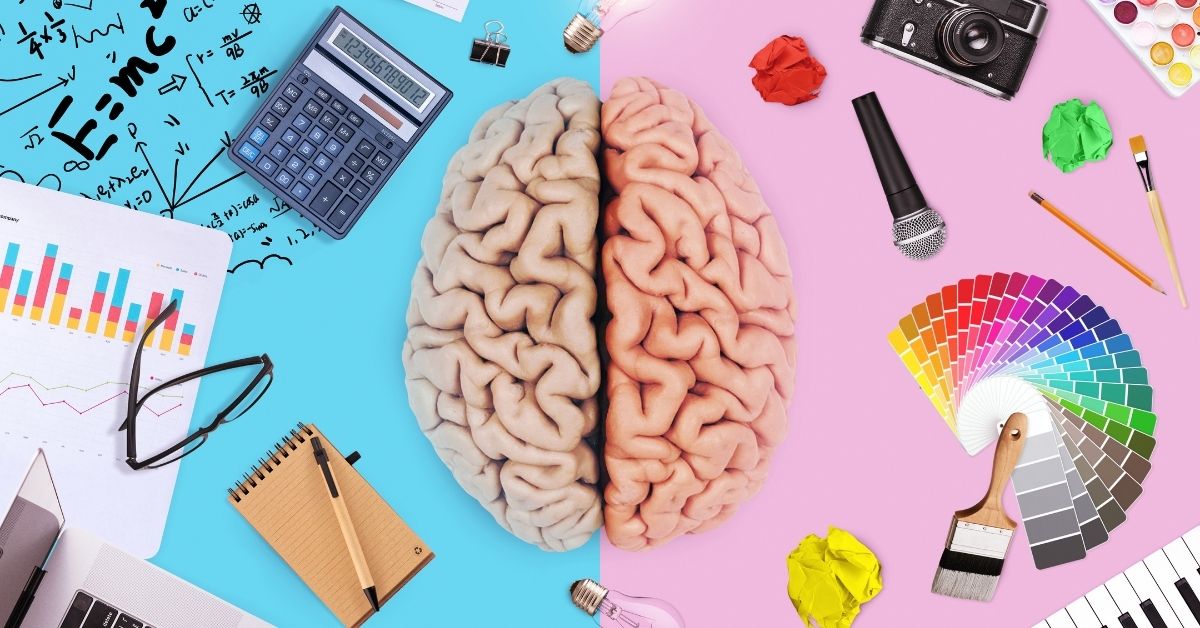In the world of homeschooling, understanding how your child learns best can be a game-changer. This brings us to the fascinating theory of left-brain versus right-brain learning. While it has sparked much debate, as a homeschooling parent, exploring these concepts can equip you with insights to tailor a homeschool curriculum that fits like a glove for your child.
In this blog, we’ll dissect the roles of each hemisphere, debunk myths, and offer practical applications to enrich your homeschooling experience.
Explanation Of Left Brain Functions And Learning Styles
Education has long been intrigued by the idea of left-brain versus right-brain dominance. This theory suggests that each side of the brain controls different types of thinking. For homeschooling parents, this concept can provide a framework to understand and nurture your child’s unique learning style. But what does it all mean, and how can you apply it to your homeschool curriculum?

The left hemisphere of the brain is often associated with logical reasoning, analytical thinking, and structured processes. Think of it as the side that thrives on order and precision. On the flip side, the right brain is thought to be the seat of creativity, intuition, and holistic thought. It embraces imagination and the big picture rather than minute details. Understanding these differences can help you recognize whether your child leans toward left-brain or right-brain learning styles, allowing you to adapt your approach accordingly. But before we dive deeper, it’s essential to note that while some may identify more with one hemisphere’s functions, everyone uses both sides of the brain. It’s not about fitting into strict categories; it’s about recognizing tendencies and using that knowledge to enhance learning.
The left brain is traditionally associated with logic and objective analysis. It’s the realm where language, mathematics, and factual recall reside. Children who show strong left-brain learning styles often excel in areas requiring step-by-step reasoning. When it comes to learning styles in children, those with a left-brain orientation might prefer lessons that are structured and sequential. They enjoy working with numbers, engaging in problem-solving activities, and thriving in environments with clear rules and expectations.
Such learners often find comfort in traditional teaching methods, where lessons are laid out concisely, making them predictable and easy to follow. In your homeschool curriculum, you can cater to left-brain learners by incorporating activities that involve lists, categorization, and patterns. These children may enjoy word games, math puzzles, and tasks that require sorting or organizing. By aligning your teaching methods with their strengths, you create an environment where they can flourish naturally.
Switching gears, let’s explore the vibrant world of the right brain. Known for its creativity and intuition, the right hemisphere plays a crucial role in processing visual and spatial information. It thrives on expressiveness and innovation, making it the domain of artists and dreamers.
Children who resonate more with right-brain learning styles often exhibit a preference for visual learning. They gravitate towards colors, pictures, and spatial awareness. These learners are imaginative and flourish in activities that allow them to visualize, create, and explore new concepts dynamically. To support right-brain learners in your homeschool curriculum, consider incorporating art projects, storytelling, and open-ended problem-solving tasks.
Hands-on activities, like building models or engaging in dramatic play, can also stimulate their creativity and help them grasp abstract concepts. By nurturing their natural inclinations, you encourage a love for learning that is both deep and enduring.
While the notion of being either left-brained or right-brained is popular, it’s largely a myth. Neuroscience tells us that the brain is an interconnected organ where both hemispheres work together seamlessly. The idea of strict hemispheric dominance can be misleading when considering learning styles in children.
Research has shown that while certain tasks might engage one hemisphere more than the other, most cognitive processes involve networks across both sides. For instance, language processing requires the left hemisphere, but understanding humor and intonation taps into the right. This integrated use underscores the importance of a balanced approach when designing a homeschool curriculum.
For homeschooling parents, this means recognizing that while your child might show a tendency toward certain styles, they benefit from experiences that engage both hemispheres. It’s about creating a rich, varied learning environment that allows them to develop holistically. By doing so, you unlock their full potential, making them versatile learners ready to tackle diverse challenges.
Practical Applications For Homeschooling Parents
Understanding the interplay between left-brain and right-brain learning can profoundly impact your approach as a homeschooling parent. By observing your child’s preferences and behaviors, you can tailor your teaching methods to suit their unique needs. Start by creating a flexible homeschool curriculum that incorporates elements appealing to both learning styles. For instance, science experiments (right brain) can be integrated with detailed lab reports (left brain). Use storytelling to introduce historical facts, allowing for creativity while ensuring factual learning. Encourage your child to express their thoughts through both written essays and artistic endeavors.
Incorporating activities that require collaboration between both hemispheres can also be powerful. Games that involve strategy and creativity, such as chess or building with Legos, engage multiple cognitive processes. This balanced approach not only supports your child’s current learning style but also helps develop new skills, creating a well-rounded educational experience.
To further support your child’s cognitive growth, consider incorporating a wide range of activities that stimulate both hemispheres of the brain simultaneously. Physical activities such as sports, dance, or martial arts can enhance coordination and spatial awareness while fostering discipline and strategic thinking.
Encourage musical activities, such as playing an instrument or singing, which involves complex auditory processing, rhythmic coordination, and emotional expression, engaging both sides of the brain. Additionally, language learning is a powerful tool for brain development. Introducing a new language not only enhances left-brain language skills but also right-brain pattern recognition and cultural understanding.
This holistic learning experience can improve your child’s problem-solving abilities and creativity. Another effective approach is project-based learning, where children tackle real-world problems that require critical thinking, collaboration, and innovation. These projects allow them to apply their knowledge across various subjects, ensuring they use both analytical and creative skills. By blending diverse educational experiences, you nurture a versatile and robust learning environment, preparing your child for a wide range of future endeavors.
In the quest to understand left-brain versus right-brain learning, remember the ultimate goal is to foster an environment where your child feels supported and motivated. By recognizing their natural tendencies, you can design a homeschool curriculum that plays to their strengths while gently challenging them to grow in other areas.
Balance is key. Provide opportunities that engage both the analytical and creative aspects of their minds. Celebrate their individuality, and encourage exploration in areas they might not naturally gravitate towards. This holistic approach to education prepares them for the complexities of the world beyond homeschooling.
Finally, keep in mind that as a homeschooling parent, you have the unique advantage of flexibility. Use it to your advantage by experimenting with different methods, observing what works best, and being willing to adjust as needed. Together with your child, you can craft a personalized learning path that is both fulfilling and effective. Whether your child is more left-brained or right-brained, the most important thing is that you are there to guide and support them. With these insights, you’re now equipped to make learning an enriching experience that nurtures your entire being.





